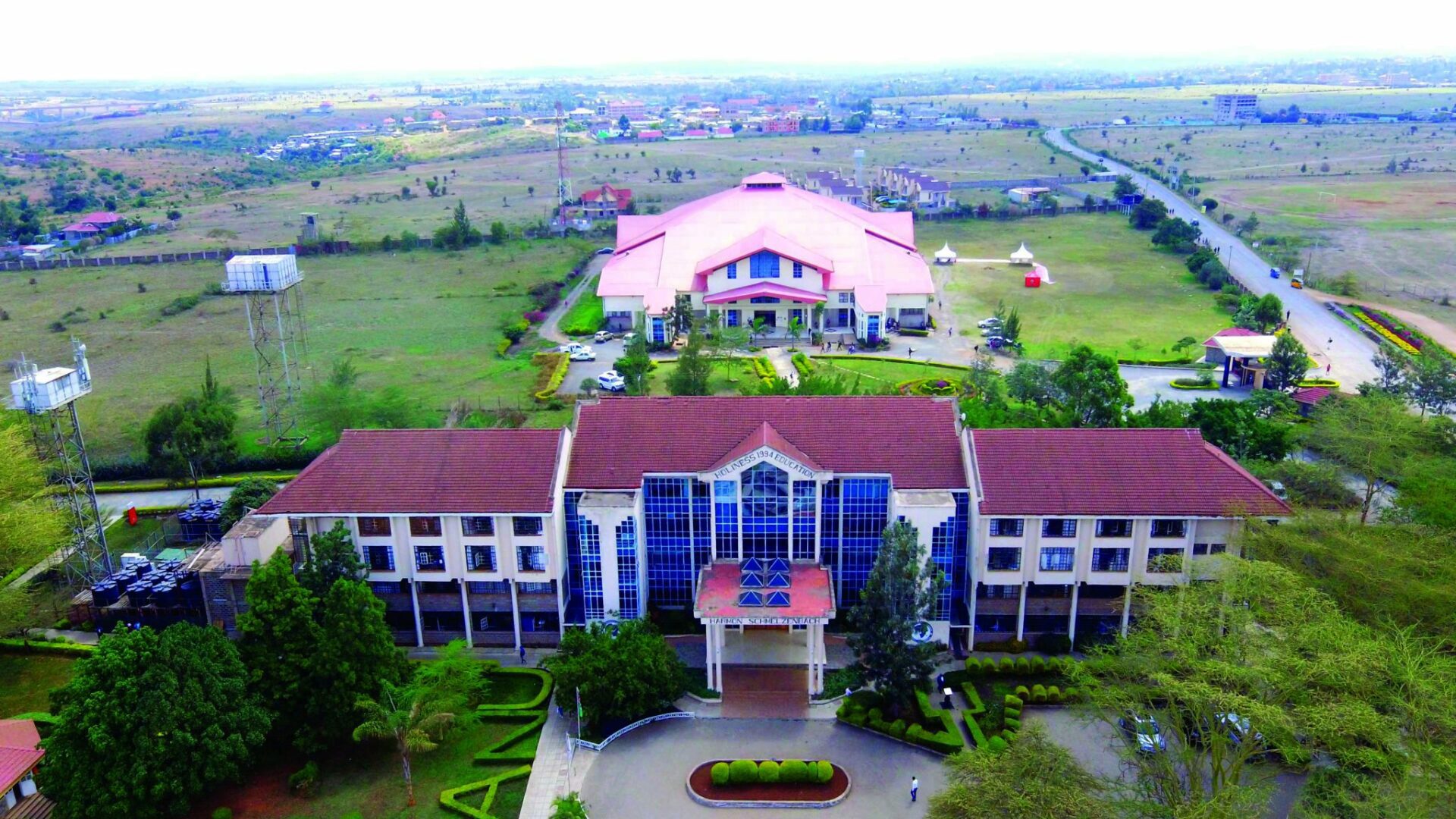ANU vCalc Collaboration
The following are links to free online calculators for the use and benefit of students and faculty around the world. These free calculators are sponsored by Olivet Nazarene University and Africa Nazarene University in collaboration with vCalc.
Mathematic Calculators
3D vector arithmetic functions including Cartesian, Spherical and Cylindrical coordinate transforms.
- k V – scalar multiplication
- V / |V| – Unit Vector
- |V| – Magnitude of a vector
- U + V – Vector Addition
- U – V – Vector Subtraction
- |U – V| – Distance between vectors
- |U + V| – Magnitude of vector sum.
- V • U – Dot Product of two vectors
- V x U – Cross Product of two vectors
- V x U • W – Mixed Product of three vectors
- Vector Angle – Angle between two vectors
- Vector Area – Area between two vectors
- Vector Projection – Vector Projection
- Vector Rotation – Result vector after rotating around an axis.
- Normal to 3 Points – Vector Normal to a Plane Defined by Three Points
- (ρ, θ, φ) to (x,y,z) – Spherical to Cartesian
- (x,y,z) to (ρ, θ, φ) – Cartesian to Spherical
- (r, θ, z) to (x,y,z) – Cylindrical to Cartesian
- (x,y,z) to (r, θ, z) – Cartesian to Cylindrical
- Vector Components – Magnitude, Unit Vector and angle between vector and three coordinate axes
- Observational Statistics: Calculate observational statistics for a set including count, min, max, sum, sum of squares (Σx²), square of the sum (Σx)², mean, median, mode, range, mid-point, rand, sort up, sort down, rand, population variance, population standard deviation, the sample/experimental variance, sample/experimental standard deviation.
- Frequency Distribution: Enter a set of numbers, a low and high range and a number of bins. This computes how many of the observations are in each of the bins between the high and low values designated.
- Random Sample of k items in a set.
- Relative Percentile of observation in a set.
- Probability of a favorable Event in a total number of outcomes.
- Binomial Distribution with the probability of S successes in n trials.
- Binomial Coefficient derived from Pascal’s Triangle.
- z SCORE of Observation in set (X)
- z SCORE based on Mean and Standard Deviation.
- z SCORE based on Probability or Percentile in Normal Distribution.
- Percentile, probability or area under the curve of a Normal Distribution left of the z SCORE.
- Percentile, probability or area under the curve of a Normal Distribution right of the z SCORE
- Area under the Normal Distribution curve between z SCOREs.
- Raw Score associated with a percentile in a Normal Distribution (μ,σ).
- Paired Sample t-test: Computes parameters for Paired Sample t-test.
- ANOVA (one way): one way analysis of variance
- (χ2) Chi-Square Test: Chi-Square value for a nxm array of data
- y = a + bx: Linear equation used with Linear Regression
- Linear Regression: Compute the regression line (least-squares) through a set of X and Y observations, and compute the regression coefficient (r).
- SDOM: standard deviation of mean
9 functions of quaternion arithmetic.
- Quaternion Addition
- Quaternion Subtraction
- Quaternion Multiplication
- Quaternion Magnitude
- Quaternion Versor
- Quaternion Conjugate
- Quaternion Inverse
- Quaternion of Rotation
- Vector Rotation
3×3 Matrix Characteristics: computes the determinant, trace, inverse and characteristic polynomial of a 3×3 matrix, Cramer’s Rule
Physics and Engineering Calculators
10 functions on levers, pulley and gear systems.
- Lever Beam Length: Computes the length of a lever (beam) on one side of a fulcrum needed to lift an object based on the objects weight and the length of the beam on the other side of the fulcrum.
- Leverage Lift Weight: Computes the weight that can be lifted using a lever based on the downward force and the length of the lever on either side of the fulcrum.
- Fulcrum Position (x): Computes the position of the fulcrum needed in a lever to lift a weight (W) with a downward force (F) with a beam of length (L), where L = x + y.
- Belt Length: Computes the length of a belt that goes around two pulleys of different diameters separated by a specific distance.
- Belt Speed: Computes the speed a belt travels based on the diameter of the pulley and the RPMs.
- Pulley RPMs: Computes the RPMs of a pulley based on the speed of the belt and the diameter of the pulley.
- 2nd Pulley RPMs: Computes the RPMs of a second pulley in a two-pulley system when the RPM and Diameter are known for one pulley and the diameter of the second pulley is also known.
- 2nd Pulley Diameter: Computes the diameter of a second pulley in a two-pulley system based on diameter and RPM of one pulley and the RPMs of the second.
- RPM of 4th pulley on three shafts: Computes the RPMs of a fourth pulley on a three-shaft system when the RMPs of the first shaft is known and the four diameters.
- 2nd Gear RPM: Computes the RPMs of a second gear when the RPM and number of teeth are known for the first gear, and the number of teeth is known for the second gear.
Light and Matter Online Physics Textbook: 36 chapters of a complete open-source to physics textbook. This text was programmed into vCalc by the faculty and students of Africa Nazarene University.
Power: (watts, milliwatts, kilowatts, horsepower)
o P = I • V: power (watts) from current (amps) and potential (volts).
o P = R • I²: power (watts) from current (amps) and resistance (ohms).
o P = V² / R: power (watts) from potential (volts) and resistance (ohms).
Potential: (volts, millivolts)
o V = I • R : potential (volts) from current (amps) and resistance (ohms).
o V = P / I: potential (volts) from power (watts) and current (amps).
o V = √(P • R) : potential (volts) from power (watts) and resistance (ohms).
Resistance: (ohms, milliohms, kiloohms)
o R = V²/P: resistance (ohms) from potential (volts) and power (watts).
o R = P / I²: resistance (ohms) from power (watts) and current (amps).
o R = V / I: resistance (ohms) from potential (volts) and current (amps).
Current: (amps, milliamps, microamps, gilberts)
o I = V / R: current (amps) from potential (volts) and resistance (ohms).
o I = P / V: current (amps) from power (watts) and the potential (volts).
o I = √(P/R): current (amps) from power (watts) and the resistance (ohms).
31 functions covering Kepler’s 3rd Law, the Small Angle Formula, Flux and Magnitude formulas, Telescope formulas, Mass formulas, Relative Size formulas, Wavelength formulas, Luminosity formulas and others.
- Kepler’s 3rd Law: T² = (4π • R³) / (G • M)
- Small Angle Formula: α = S / D
- Flux and Magnitude formulas
- Telescope formulas
- Mass formulas
- Relative Size Formulas
- Wavelength Formulas
- Luminosity and other Formulas
Angles of Reflection and Refraction Calculator:
Reflection, refraction and critical angle according to Snell’s Law.
- Angle of Transmission
- Angle of Incidence
- Refractive Index of Medium 1 (n1)
- Refractive Index of Medium 2 (n2)
- Critical Angle
Chemistry Calculators
Ideal Gas Law: P • V = n • R • T
The Ideal Gas Law calculator has the formula solved for its constituent parts as follows:
- (P) pressure (atmospheres, pascals, bar, Torr, inches of mercury, psi, N/m2)
- (V) volume (liters, mL, cc, gallons)
- (n) number of moles (moles)
- (R) Universal Gas Constant
- (T) temperature (Kelvin, Celsius, Fahrenheit)
Charles Law: V1•T2 = V2•T1
The Charles’ Law Calculator has the formula solved for its constituent parts as follows:
- (V1) Initial Volume
- (V2) Resulting or Final Volume
- (T1) Initial Temperature
- (T2) Resulting or Final Temperature
Boyles Law: P1 • V1 = P2 • V2
The Boyles’ Law Calculator has the formula solved for its constituent parts as follows:
- (P1 = P2 • V2/V1) Initial Pressure
- (V1 = P2 • V2/P1) Initial Volume
- (P2 = P1 • V1/V2) Final Pressure
- (V2 = P1 • V1/P2) Final Volume
Gay-Lussac Law: T1 • P2 = T2 • P1
The Gay-Lussac Law Calculator has the formula solved for its constituent parts as follows:
- (T1) Initial Temperature
- (P2) Final Pressure
- (T2) Final Temperature
- (P1) Initial Pressure
Combined Gas Law: Pi • Vi/Ti = Pf • Vf/Tf = k
The Combined Gas Law Calculator has the formula solved for its constituent parts as follows:
- (P) Pressure from volume, temperature and the combined gas constant.
- (V) Volume from pressure, temperature and the combined gas constant.
- (T) Temperature from pressure, volume and the combined gas constant.
- k gas constant
- (Pf) Final Pressure from initial and final temperature and volume and initial pressure.
- (Tf) Final Temperature based on an initial and final pressure and volume and an initial temperature.
- (Vf) Final Volume based on an initial and final pressure and temperature and an initial volume.
The Bragg’s Law calculator has the formula solved for its constituent parts as follows:
- (d) distance between layers of atoms
- (n) order of diffraction
- (λ) wavelength of x-ray
- (θ) the angle of incidence of the incoming x-ray
The Rate Law calculator has rate of reaction functions for Zero Order, First Order and Second Order reactions as follows:
- Zero Order Rate Law (Integral form)
- Zero Order Half Life
- Zero Order Rate Law
- First Order Rate Law (Integral form)
- First Order Half Life
- First Order Rate Law
- Second Order Rate Law (Integral form)
- Second Order Half Life
- Second Order Rate Law
53 functions embedded functions in a free online chemistry E-Textbook. These include ChemPRIME, Concept Development Studies in Chemistry, UC Davis ChemWiki: The Dynamic Chemistry E-Textbook.
Miscellaneous Chemistry Calculators
- Hess’ Law: ΔH0rxn=ΔH0a+ΔH0b+ΔH0c+ΔH0d
- Internal Energy (heat + work) : ΔU=q+ w
- Activation Energy: Ea = (R*T1⋅T2)/(T1 – T2) ⋅ ln(k1/k2)
- Arrhenius Equation: k = AeE_a/(RT)
- Clausius-Clapeyron Equation: ln(P2/P1) = (ΔHvap)/R * (1/T1 – 1/T2)
- Compressibility Factor: Z = (p*Vm)/(R*T)
- Peng-Robinson Equation of State: p = (R*T)/(Vm – b) – (a*α)/(Vm2 + 2*b*Vm – b2)
- Reduced Specific Volume: vr = v/(R* Tcr/Pc)
- Van’t Hoff Equation: ΔH0 = R * ( -ln(K2/K1))/ (1/T1 – 1/T2)
Meteorology and Weather
Functions on heat indices, humidity, wind chill and barometric pressure.
- Heat Index
- Canadian Humidex
- Australian Apparent Temperature
- Relative Humidity
- Dew Point from Relative Humidity
- Summer Simmer Index
- Wind Chill
- Wet-Bulb Globe Temperature
- Humature Index
- Troposphere Barometric Pressure
Business and Economics
Microeconomics functions:
- Price Elasticity of Demand (Midpoint Method)
- Average Fixed Cost
- Average Variable Cost
- Average Total Cost
- Unit Cost / Average Total Cost
- Profit as a function of revenue and expense.
- Profit (v.2) as a function of unit price, cost and quantity produced.
- Economic Profit
- Cross-Price Elasticity of Demand
- Income Elasticity of Demand
- Price Elasticity of Demand
- Price Elasticity of Supply
- Consumer Surplus
- Producer Surplus
- Total Surplus
- Accounting Profit
Functions related to macroeconomics including GDP, Inflation, Surplus, Producer, Consumer, Imports, Exports, Currency, Domestic and International.
- Income Elasticity of Demand
- Cross-Price Elasticity of Demand
- Price Elasticity of Demand
- Price Elasticity of Supply
- Total Surplus
- Consumer Surplus
- Producer Surplus
- GDP Growth
- GDP Deflator
- GDP by Income
- GDP Expenditure
- Net Capital Outflow
- Net Exports and Net Capital Outflow
- Dollar Conversion from Different Times
- Unemployment Rate (Friedman and Phelps)
- National Saving
- Domestic Investment
- Unemployment Rate
- Inflation Rate in Year 2 (using CPI)
- Labor Force
- Labor-Force Participation Rate
- Net Exports
- Real Exchange Rate
- Currency Converter
Hospitality Industry Calculator
67 functions (formulas) related to hotels, food services, restaurants, cost, labor, pricing, turnover, occupancy, sales, ADR, GOP-PAR, forecast, margins and more. Hospitality calculators are in the following categories:
- Income Statement
- Ratio Analysis
- Food and Beverage Pricing
- Revenue Management for Hotels
- Managerial Accounting for Costs
- Forecasting in the Hospitality Industry
- Budgeting and Internal Controls
- Capital Investment, Leasing and Taxation
Functions on loans, interest, credit cards, cash flow, present and future value and annual growth rate (CAGR):
- Annualized Amortization: monthly payment on a fixed interest rate loan.
- Credit Card Equation: number of months to pay off a credit card.
- Leverage Ratio: ratio describing debt to income.
- Cash Flow: difference between income and expenses
- Compound Interest: compounded interest on a fixed interest rate investment
- CAGR: compounded annual growth rate achieved on an investment.
- Present Value: present value of a fixed annuity.
- Future Value: future value of a fixed annuity.
- Rule of 72: quick estimate on time to double an investment
- Simple Interest Earned: rough estimate on interest earned over time.
Production Calculator
The Production Calculator computes the cost in time or capital to buy, produce or consume commodities measured by number of units or by length, area, volume or weight. It provides conversions between different units for time, length, area, volume, mass and up-to-date conversions between several international currencies.
PRICE or Production Time by UNITS
- Time for Units: Computes time to process a number of units.
- Units over Time: Computes number of units processed over a period of time.
- Total Cost of Units: Computes total cost based on the number of units and the cost of a single unit.
- Unit Cost: Computes the Average Unit Cost.
PRICE or Production Time by LENGTH
- Price per Length or Distance: Computes total cost for items measured by length or distance.
- Length over Time: Computes total length processed or traveled over time.
- Time for Length: Computes time required to process or travel length or distance based on a rate.
PRICE or Production Time by AREA
- Price per Area: Computes total cost for items measured by area.
- Area over Time: Computes the total area processed or traveled over time.
- Time for Area: Computes time required to process an area based at a rate.
PRICE or Production Time by VOLUME
- Price per Volume: Computes total cost for items measured by volume.
- Volume over Time: Computes total volume processed over time based a rate.
- Time for Volume: Computes time required to process a volume based at a rate.
PRICE or Production Time by WEIGHT or MASS
- Price per Weight or Mass: Computes total cost for items measured by weight or mass.
- Weight or Mass over Time: Computes total weight or mass processed over time based on a rate.
- Time for Weight or Mass: Computes time required to process a weight or mass based at a rate.
Amdahl’s Law: Computes the speedup factor for a total task based on the speedup factor of a portion of the task and the percent of that portion in relation to the total task.
The Price Comparison Calculator compares prices for products with different amounts and prices.
- Price Compare by Product Price and Number of Items in the Product
- Price Compare by Product Price and Length of Item in Product
- Price Compare by Product Price and Area of Item in Product
- Price Compare by Product Price and Volume of Item in Product
- Price Compare by Product Price and Weight or Mass of Item in Product
Various Business and Economics Calculators:
- Herfindahl-Hirschman Index: Computes an index on market concentration.
- Gordon Growth Model
- 30 Day Yield
- Black-Scholes
- Cobb Douglass Cost Minimizing Inputs
- Cobb-Douglas Utility Maximizing Consumption Bundle
- Utility Maximizing Consumption Bundle: Perfect Complements
- SE, IE, TE for Cobb-Douglas
- Utility Maximizing Consumption Bundle: Cobb-Douglas
- Cost Minimizing Inputs: Perfect Complements
- Cost Minimizing Inputs: Perfect Substitutes
- Single Payment Compound Amount (SPCA) Factor
- Uniform Series Sinking Fund (USSF) Factor
- Single Payment Present Worth (SPPW) Factor
- Uniform Gradient Future Worth (UGFW) Factor
- Uniform Gradient Present Worth (UGPW) Factor
- Uniform Gradient Uniform Series (UGUS) Factor
- Uniform Series Compound Amount (USCA) Factor
- Uniform Series Present Worth (USPW) Factor
Psychology Calculators
Psychology and Statistics Calculator
The Psychology and Statistics Calculator contains useful tools for Psychology Students. The psychology statistics functions include the following:
- Wilcoxon Signed Rank Test: Enter two sets, whether it’s a one or two tail test and an alpha value to see the Wilcoxon statistic and the critical value.
- Bayes’ Theorem for Disease Testing: Enter a base rate probability, probability of false positives and the probability of correct positives to see a ratio of people with the disease, approximate number of false and true positives and the theorem’s percent likelihood of a having the disease if tested positive.
- chi-square for 3×2: Enter a 3×2 matrix to see the expected values matrix with row and column totals, degrees of freedom and the chi-square value.
- Rescorla-Wagner Formula (alpha and beta version): Enter salience for conditional stimuli, rate of unconditional stimuli, maximum conditioning for unconditioned stimuli and the total associative strength of all stimuli present to see the change in strength between conditional and unconditional stimuli.
- Rescorla-Wagner Formula (k version): Enter Maximum conditioning possible for the unconditioned stimuli, total associative strength of all stimuli present, combined salience of the conditioned and unconditioned stimuli, and number of trials to see the change in strength associated with the trials.
- Ricco’s Law: Enter the area of visually unresolved target and constant of background luminance when eyes are adapted to see Ricco’s Law factor.
- Ricco’s Law (K variable): Enter the scotopic vision constant, background luminance and photopic vision constant.
- Stevens’ Power Law: Enter proportionality constant, magnitude of stimulation, type of stimulation exponent to see magnitude of sensation.
- Weber Fraction: Enter just-noticeable difference for intensity and stimulus intensity to see the weber fraction.
- Weber-Fechner’s Law: Enter just-noticeable difference for intensity, instantaneous stimulus, stimulus intensity and the threshold to see the factor.
- Observational Statistics (aka Simple Stats): Observational statistics on a set including: count, min, max, mean, median, mode, mid-point, range, population and sample variance and standard deviation, mean absolute deviation, standard deviation of mean, sum of values, sum of squared values, square of the sum, and the sorted set.
- Frequency Distribution: Frequency distribution of a set of observations in uniformly sized bins between a minimum and maximum.
- Least-squares Trend Line (aka Linear Regression): Linear regression line on a set of paired numbers (correlation coefficient, number of observations, means, sums (ΣX, ΣY, Σ(X⋅Y), ΣX2, ΣY2), y intercept, and (b) slope of regression line.
- Single-Sample t-test: t-Test parameters including alpha level, population mean and whether it’s one or two tailed and see the degrees of freedom, critical t-value, t score and the standard error.
- Paired Sample t-test: Test of two sets of values with an alpha level and whether it’s one or two tailed and see the number of observations, mean and standard deviation for both sets, the degrees of freedom, critical t-value, t-score and the Standard Error value.
- Effect Size (r-squared): Degrees of freedom to see r2 for t-test result.
- Effect Size (Cohen’s d): Estimated standard deviation to see the effective size.
- Analysis of Variance (one way): ANOVA for numeric observations of three groups. Computes the F Score, Numerator: degrees of freedom Between, Denominator: degrees of freedom Within, mean of each group, grand mean, total sum of squares, sum of square within and between, and variance within and between.
- Random Integer: Random integer between a lower and upper bound.
Biology and Ecology Calculators
- Logistic Growth: computes the logistic growth based on the per capita growth rate of population, population size and carrying capacity
- Malthusian Growth Model: computes the estimated future size of a population (P) based on the current population (P0), a growth exponential factor (r) and the period of time (t).
- Organism Count (Logistic Growth): computes the number of cells/organisms undergoing exponential growth as a population.
- Biotic Potential: computes the maximum population growth based on the per capita growth rate of population and the population size
- Max Potential Growth Rate (biotic potential):
- How Many Ancestors: computes the total number of ancestors a person or sexual reproducing animal has base on the number of generations going back. It also estimates the approximate time span associated with those ancestors.
- SIS Epidemic Model: computes the basic reproduction number and the portion of the population susceptible.
- SIR Epidemic Model: provides information on the increase or decrease of an epidemic based on the infection rate, recovery rate, total population, initial susceptible population, initial infected population and the initial recovered population.
- Mosteller formula Body Surface Area Calculator
- Gehan and George formula Body Surface Area Calculator
- Boyd formula Body Surface Area Calculator
- DuBois formula Body Surface Area Calculator
- Haycock formula Body Surface Area Calculator
- Fujimoto formula Body Surface Area Calculator
- Takahira formula Body Surface Area Calculator
- Costeff formula Body Surface Area Calculator
- Wang Hihara Body Surface Area Calculator
- Schlick Body Surface Area Calculator
- Body Surface Area Comparison with Averages
- Wallace Rule of Nines: Computes a percentage of the human body for burn victims based on percentages allocated to different body parts.
- Rule of Fives: Computes a percentage of the human body for obese burn victims.
- Parkland Replacement Fluid: Computes the volume of replacement fluids needed in the first 24 hours based on the patient’s weight (mass) and the percent of their body that has been burned.
Epworth Sleepiness Scale: computes potential of medical condition associated with tiredness (e.g., sleep apnea)
The Metabolic Health calculator has formulas for metabolism and calories burned:
- BMRW – Daily Basal Metabolic Rate for Women
- BMRM – Daily Basal Metabolic Rate for Men
- RDEE – Resting Daily Energy Expenditure (Katch-McArdle Formula)
- TDEE – Total Daily Energy Expenditure based on BMR and activity level
- LBMW – Lean Body Mass for Women based on height and weight
- LBMM – Lean Body Mass for Men
- BMI – Body Mass Index with interpretation
Sports and Fitness
Body Building and Weight Lifting
Functions related to weight lifting and body building.
- Epley Formula one repetition max weight
- Brzycki Formula one repetition max weight
- Lander’s Formula one repetition max weight
- Mayhew Formula one repetition max weight
- Lombardi Formula one repetition max weight
- Wathen Formula one repetition max weight
- O’Conner’s Formula one repetition max weight
- DAPRE Progression for Endurance
- DAPRE Progression for Strength
- Macronutrient Breakdown for Building Muscle
- IPF GL Formula Points Calculator : Computes the International Powerlifting Federation GL Points
- IPF GL Formula : Computes the International Powerlifting Federation GL multiplier.
- Wilks Coefficient
- Wilks Coefficient Applied
Functions on calories burned over time doing various activities and exercises.
- Calories burned during aerobic exercise
- Calories burned cycling base on speed
- Calories burned cycling a distance
- Calories burned running a distance
- Calories burned downhill skiing
- Calories burned cross-country skiing
- Calories burned canoeing
- Calories burned golfing
- Calories burned jumping rope
- Calories burned kayaking
- Calories burned horseback riding
- Calories burned hiking



















